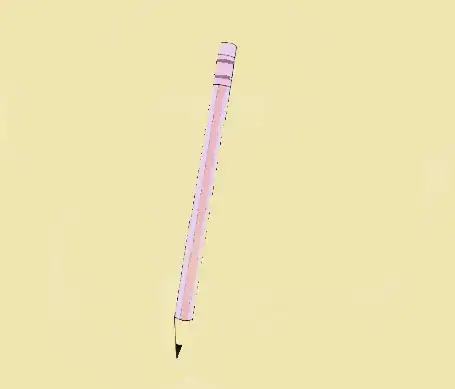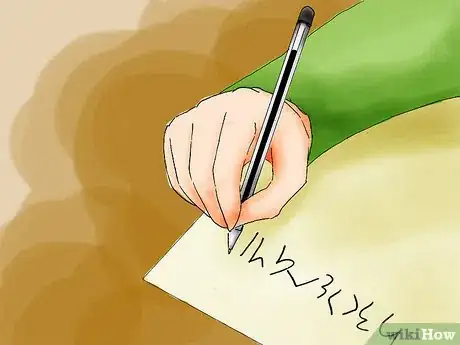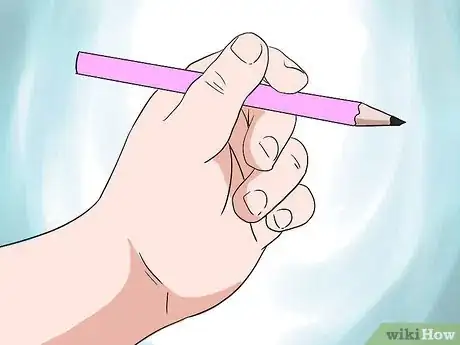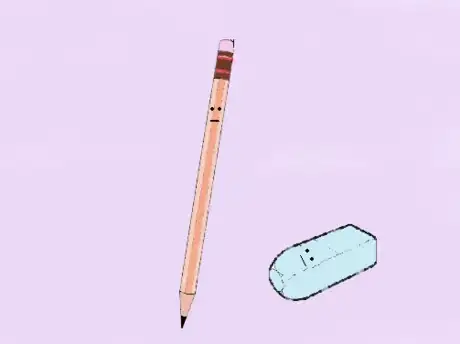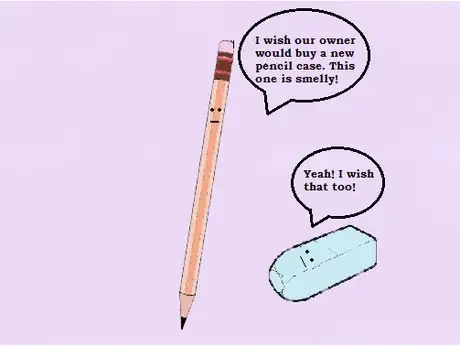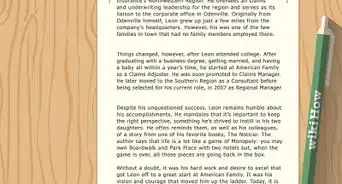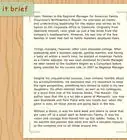X
wikiHow is a “wiki,” similar to Wikipedia, which means that many of our articles are co-written by multiple authors. To create this article, volunteer authors worked to edit and improve it over time.
This article has been viewed 31,132 times.
Learn more...
So you got an English assignment about an essay on the topic 'Autobiography of a Bookshelf'. Or maybe you've been inspired by your dressing table and you want to write from its perspective. Writing autobiographies of inanimate objects can be sometimes difficult, but with a little creativity, you might bring a different view of an object which commonly does not invoke thought.
Steps
Part 1
Part 1 of 3:
Getting to Know the Object
-
1Think about how the object exists. Ponder on how the object came into existence, and how it existed all these days. Here, the example of a pencil is used.
- Consider if you want to tell the reader about how the pencil was born. Sentences like 'I call the tree in Jacob's garden my mother, because Jacob made me from its branch' go well if you choose to describe how it was born.
- If you do not want to do it, you can just let the pencil tell about its experiences without bothering about birth.
-
2Recollect your past experiences with it. Perhaps you poked your friend with the pencil, or wrote an amazing story with it.
- In the autobiography, the pencil will be writing about its experiences with you.
- If no memory comes to your mind, try 'inventing' a memory. For example, you might just invent something like 'I always sat in a neat pencil case because my owner Agatha is a neat freak', even though your pencil case was smelly and dirty! It is fiction, after all.
Advertisement -
3Stop thinking of it as an 'inanimate' object. Try to put yourself in its shoes, and think about how you would've felt if you had been the pencil.
- Give it a name. You can invent a fancy name and surname, or give it a normal name.
- Give preference to a made-up name, as it intensifies your object's personality,
-
4Brainstorm by talking out loud "with" the object. The conversation would be rather one-sided, but you might find interesting answers to the questions you asked it, even if you answer them yourself.
Advertisement
Part 2
Part 2 of 3:
Writing
-
1Write in first person, past tense.
- Your pencil is old, as it is writing an autobiography, so the entries have to be in past tense.
- Make sure that you do not use third person to write, as then it will be a biography.
-
2Give yourself a fictional name, or be yourself in the autobiography.
- Entries like 'Mary looked after me well, but she always pressed me onto the page as she wrote, thus breaking my lead often' show the name of the pencil's owner.
- Exaggerate your experiences. Instead of writing 'John put me in a smelly box', write 'John shoved me into a box with the most disgusting smell imaginable!'. This will give the writing a sort of life
-
3Write about the experiences it had with its own life. Let it grumble about how clueless its owner had been, or how a young eraser once cheeked it.
- You can also write about the bad times it faced, the mistakes it made, and how it learned from it. This depends on whether you plan to keep the autobiography light and merry, or deep and philosophical.
-
4Make sure the writing includes dialogue. The autobiography should look 'real' and convincing, not like you sat down and forced it out.
- The pencil can talk to anyone, like it can discuss things with the eraser, or fight with the ruler. Let your imagination go wild!
-
5Give it some personality. You might want to add some wisdom here and there. Your pencil may be old, after all, and is wise! Or you can also show how young and immature an old pencil behaves by writing about unreasonable grumbles, and how it heard a pen saying to a sharpener how bad it is to be living with the pencil.
- See if you want to put the pencil as the good character, or as a bad character, or as a normal one.
- Include some funny moments, even if you want the autobiography to be rather serious.
Advertisement
Part 3
Part 3 of 3:
Finishing Up
-
1Revise your work. Check for spelling and grammar errors. Make sure that your character is portrayed in the way you want it to be.
- Also, check that you write in first person, past tense. Writing in third person makes it a biography, not an autobiography, and past tense signifies the past experiences of your pencil.
-
2Submit your work, to your teacher, or to a publishing house. If the work is short, you might make it a part of a collection of short stories.
Advertisement
Community Q&A
-
QuestionWhat about an autobiography of a coin?
 Community AnswerA coin goes through many events and is touched by many hands, clean and dirty. This would lead to some exciting and unusual story lines, starting with when and where the coin was minted to all the different places it was spent and the items that were purchased.
Community AnswerA coin goes through many events and is touched by many hands, clean and dirty. This would lead to some exciting and unusual story lines, starting with when and where the coin was minted to all the different places it was spent and the items that were purchased. -
QuestionWhat if they said to write about a teddy bear?
 Community AnswerWrite a story from the perspective of the teddy bear; use your imagination as to what life would be like.
Community AnswerWrite a story from the perspective of the teddy bear; use your imagination as to what life would be like. -
QuestionHow do I write the autobiography of an apple?
 LouisaCommunity AnswerThink about how your apple looks, where it is, where it has been, what processes and experiences it has witnessed, and who could have interacted with it.
LouisaCommunity AnswerThink about how your apple looks, where it is, where it has been, what processes and experiences it has witnessed, and who could have interacted with it.
Advertisement
About This Article
Advertisement
